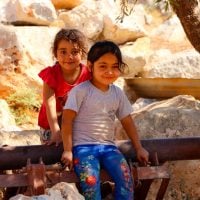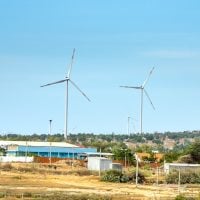Deadline: 22-Jun-23
The United States Agency for International Development (USAID) is seeking applications for a Cooperative Agreement from qualified entities to implement the Kuthekera (We can) Malawi Project.
Purpose, Expected Results, and Objectives
- Primary project Purpose
- The goal of the Kuthekera project is to reach and maintain epidemic control through prevention of new HIV infections by targeting men and women at substantial risk in high burden districts.
- Expected Results
- The implementation of geographic and population-tailored structural and behavioral interventions will prevent HIV acquisition and transmission among high-risk men and women.
- Objective 1 – AGYW Services, Demand and Referral (DREAMS) Increase availability of and demand for high quality, integrated HIV and SRH services for AGYW.
- DREAMS AGYW’s main activities for this component will include need-based biomedical interventions for HIV and sexual and reproductive health (SRH) such as pre-exposure prophylaxis (PrEP), HIV testing services, family planning (FP), post GBV care, and STI’s. This project will have four main intermediate results.
- AGYW Services, Demand and Referral – Context
- The AGYW population is a priority for the GoM, both for HIV prevention and in the broader development context of the country. Malawi has enacted several laws and policies in recent years to improve the social and economic situation of AGYW. Many of these laws and policies also aim to make AGYW less vulnerable to negative sexual and reproductive health outcomes.
- AGYW Services, Demand and Referral – Initiative
- DREAMS is an existing initiative that aims to provide AGYW aged 10-24 with the opportunity to live a Determined, Resilient, Empowered, Mentored, and Safe life (DREAMS). DREAMS collaborates with partner governments to deliver a core package of interventions that address the structural drivers that increase girls’ HIV risk by focusing on AGYW, their families, larger communities, and men identified as sexual partners for AGYW.
- AGYW Services, Demand and Referral – Key Challenges
- Young women’s HIV risk and vulnerability are influenced by structural, cultural, legal, biological, and institutional factors. Youth-friendly health services (YFHS) are in short supply. Poverty and food insecurity contribute to elevated levels of transactional sex, with AGYW seeking necessities such as food and school fees from their male partners, as well as consumer items.
- AGYW Services, Demand and Referral – Context
- DREAMS AGYW’s main activities for this component will include need-based biomedical interventions for HIV and sexual and reproductive health (SRH) such as pre-exposure prophylaxis (PrEP), HIV testing services, family planning (FP), post GBV care, and STI’s. This project will have four main intermediate results.
- Objective 2 – Comprehensive Condom Programming (CCP) To increase availability of, access to, and demand for male and female condoms among persons engaged in risky sexual behavior.
- Ensure that key and priority populations, as well as low-income groups, have equitable access to, and sustained demand for condoms, and increased levels of condom use. Applicants must ensure that condoms are integrated into other prevention and treatment interventions such as VMMC, care and treatment, PrEP, DREAMS, ANC, programs to engage men, and KP service delivery interventions in community and clinical settings.
- Malawi Condom Context
- Malawi’s national condom strategy expired in 2020, and PEPFAR is currently collaborating with UNAIDS and the Global Fund to support the development of a new condom strategy, a foundational document for comprehensive condom programming. The goal of the previous condom strategy (2015-2020), was to “improve the availability and access to quality male and female condoms by all sexually active persons, thereby contributing to the prevention of HIV infection, STIs, and unintended pregnancies in Malawi,” and the new strategy will follow the same principles.
- PEPFAR Guidance on Condom Programming
- PEPFAR recognizes the significant role of condoms in HIV prevention, care, and treatment efforts. Condoms are effective when used in conjunction with other prevention services as part of an “informed choice” and client-centered approach. Condoms should be strategically integrated into interventions such as VMMC, HTS, care and treatment, PrEP, DREAMS, programs to engage men, and KP service delivery. Condom programs should continue to use methods that ensure equitable access to condoms with medically accurate information among key and priority populations, as well as low-income groups.
- Challenges to Increasing Condom Use
- Strong condom programming necessitates system-level investment in program stewardship, which will support improvements in demand and supply, leading to improved program outcomes. Despite progress in increasing condom availability and use, Malawi has significantly lower condom use than other countries in the region.
- Malawi Condom Context
- Ensure that key and priority populations, as well as low-income groups, have equitable access to, and sustained demand for condoms, and increased levels of condom use. Applicants must ensure that condoms are integrated into other prevention and treatment interventions such as VMMC, care and treatment, PrEP, DREAMS, ANC, programs to engage men, and KP service delivery interventions in community and clinical settings.
Funding Information
- Direct Activity Cost – TOTAL $18,250,000.00
- Crisis Modifier – up to and within the total $182,500.00
- Start Date and Period of Performance for Federal Awards – The anticipated period of performance is five years. The start date will be dependent upon the timeline in which negotiations and necessary responsibility determinations will be completed.
Target Population
- DREAMS AGYW and the comprehensive condom program component will be combined into a single award. Because of their high vulnerability, adolescent girls and young women are disproportionately affected by HIV, while most people at substantial risk of HIV infections do not have access to condoms. While the project will focus on AGYW, sexual partners of the AGYW and ABYM will be provided with combination HIV prevention interventions in safe spaces that can be accessible by both populations.
- Within each focus district, this project will analyze available data, such as MPHIA and antenatal care (ANC) surveillance, to identify and prioritize populations at greatest risk of HIV. Typically, these populations will include young women aged 10-24, and high-risk individuals for condom programming such as migrant workers, persons living or working along major highways and in informal settlements, discordant couples, and KPs, and their partners. This project will tailor interventions to achieve “saturation” coverage of these populations within the focus districts.
Eligibility Criteria
- Eligibility for this NOFO is restricted to local (Malawian) and Regional (Southern African Development Community – SADC) organizations. Applications from organizations that have not previously received financial assistance from USAID are welcome if the Applicant determines that it has necessary capacity to implement projects of the magnitude such as this one.
- Applicants MUST meet the following criteria that qualifies what a local or regional organization as defined by the President’s Emergency Plan for AIDS Relief (PEPFAR).
- USAID/PEPFAR defines a “local or regional entity” as an individual, a sole Proprietorship, or an entity that:
- Is incorporated or legally organized under the laws of the country or region and have its principal place of business in the country or region served by the PEPFAR program with which the entity is or may become involved.
- It is 75% beneficially owned by at the time of the application by individuals who are citizens or lawfully admitted permanent residents of that same country or region.
- At least 75% of the entity’s staff (senior, mid-level, support) at the time of the application must be citizens or lawfully admitted permanent residents of that same country or region and
- Where an entity has a Board of Directors, at least 51% of the members of the Board must also be citizens or lawfully admitted permanent residents of the country or region.
- Faith-based organizations are eligible to apply for federal financial assistance on the same basis as any other organization and are subject to the protections and requirements of Federal law.
For more information, visit Grants.gov.









































